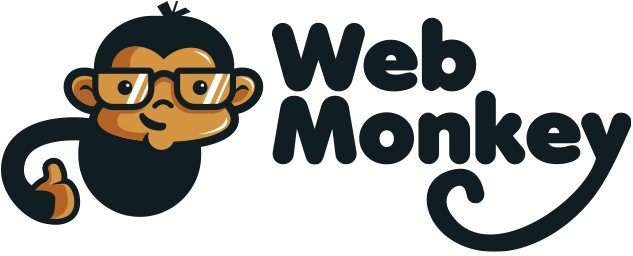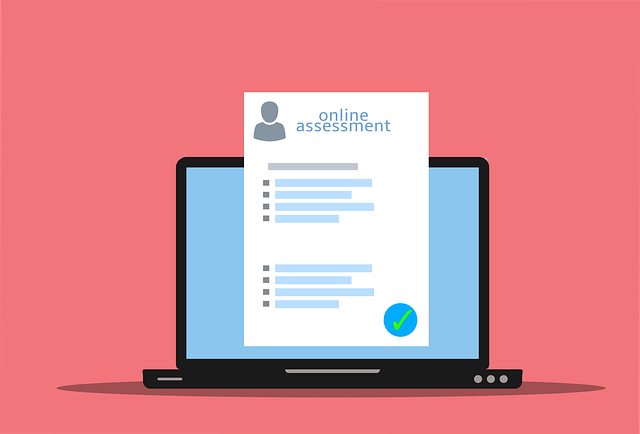Elementor vs Divi – 2023 WordPress Page Builder Comparison
A lot of detail gets lost in translation between the client, web designer, and developer. For those who prefer to streamline the approach, several WordPress page builders have emerged to bridge the gap and make it easier to design a full-featured website without relying on a developer to custom code every detail.
WordPress is inarguably the industry-leading open-source content management software for building websites. But the basic editor that WordPress provides is difficult to navigate and leaves many users looking for a better solution. Two of the major solutions, Elementor and Divi, vie for top billing when it comes to naming the best WordPress page builder plugin.
What is Elementor?
Launched in June 2016, Elementor is a live WordPress editor plugin that replaces the basic WordPress editor. It features a user-friendly interface so that almost anyone can use the editor to build a website without much of a learning curve, one of the biggest downfalls of traditional web page editors. Many of the features are drag-and-drop.
The cost is reasonable, ranging from a super affordable $0 to $199 per year, depending on how many sites and features you want to invest in. The gang behind Elementor is committed to providing regular updates so that the editor continues to work as it should.
Design Features
Built to streamline the process of web design, you no longer have to know CSS to build a great website. Right from the editor, you can change fonts, colors, add custom CSS, add background gradients, videos, and overlays. You can take your designs to the next level with special blend modes, CSS filters, and Elementor’s shape divider tool, which allow you to manipulate your graphics without the need for advanced Photoshop skills.
Marketing Features
Whether you are trying to collect data on potential leads, attract attention, or move leads through sales funnels, Elementor has all of the tools that you need in one place. You can build stunning landing pages full of features like widgets, pop ups, testimonials, countdowns, ratings, custom forms, and call to action links.
Typography Features
You can do a lot more with Elementor than just simple text modifications. Standard changes like fonts, size, eight, decoration, line, and letter spacing are there. Plus, add HTML tags, drop caps, text shadows, and columns.
Layout Features
Take complete control of your pages' layout by easily manipulating sections, columns, spacing, margins, and padding.
Mobile Features
Optimize your web pages by device with independent changes. Set font size, layout, and individual elements by device type so that your pages are as responsive and usable on a smartphone as they are on a laptop.
Theme Builder Features
Manipulate your theme's individual features like visuals, content, headers, and footers, and more special theme editing features. For bloggers, create a blog post template to use over and over to streamline your posts. Create unique, 404 pages and search result pages. Easily set up a portfolio with a built-in portfolio widget or add custom menus.
ECommerce Features
Easily add e-commerce features to any website using the dynamic Woo Commerce platform. Individually manage WooCommerce elements, product descriptions, price lists, categories, and price tables right in elementor with no need to add additional WordPress plugins.
Form Features
Build any form that you need, from simple contact forms to confirmation emails and custom messages. Integrate tracking features in your forms with hidden fields and take advantage of Honeypot compatibility for security needs.
Social Media Features
Blend your current social media pages and activities with your website with full support for Facebook pages, comments, and embedding. Add social icons and share buttons to increase engagement and build your community.
Media Content Features
Display content on your pages in unique and attractive ways with carousels, slides, overlays, and embedding options.
Support Features
The majority of support for Elementor comes from an active community of designers and developers who use the products and are eager to help others. The company directly provides support by email, but the community resources are often quicker and more complex than the email support. The base module is free, but Elementor offers a satisfaction guarantee on those purchases if you pay for the professional versions.
Pros: What We Like About Elementor
Elementor bills itself as a live, drag-and-drop editor that is simply faster than the others. Speed is good, but their user-friendly design is even better.
- Elementor has familiar interface controls like copy/paste and drag & drop.
- The simplified design process allows users to design an entire website from one screen.
- Workflow is seamless with autosave, undo, redo, and revision history, keeping track of every detail.
- It has built-in Design Capabilities, including basic photo editing, backgrounds, animations, overlays, and fonts.
- Integrated marketing solutions include landing pages, a popup builder, a form builder, and easy integration for third-party marketing tools.
- Full integration with Woo-commerce builder at the pro level pairs perfectly with integrated marketing tools to build start-to-finish sales funnels.
- A full range of widgets for design elements replaces the need to install extra WordPress plugins.
- There is an excellent support network from a community of Elementor experts available to answer any question. While they don’t offer live chat support, their support community's sheer reach is more powerful than a contact center or chatbot could ever be.
Cons: What to Consider About Elementor
So far, this plugin sounds like a dream come true to anyone who has struggled to build a WordPress site. But there are two sides to every story; here are a few things you should know before you jump in feet first.
- Although we agree that the interface is easy to use, allowing free reign on creative control means that there are too many details to get lost in. If you choose this editor, rough out a plan before you get started, or you might spend hours getting lost in the details.
- While Elementor works with a long list of WordPress themes, it is not exhaustive. If you use a theme that does not recognize Elementor, then the plug-in has a nasty habit of overriding your color schemes and fonts.
- The pricing structure is subscription-based, and you have to keep the plugin installed, or you will lose your entire design. For users who don’t like the idea of paying monthly fees, this one may be a non-starter. The prices are very affordable now, but there is no guarantee for the future and no option to buy a lifetime update.
- For developers, things get a little bit more complicated. It can be difficult to design widgets to work with Elementor, and there is no option for back-end editing. Elementor is a front-end, the only editor.
What is Divi WordPress Page Builder?
Divi has been around just a little bit longer than Elementor, launched by Elegant Themes in 2015. It offers a user-friendly visual editor on the front-end with a developer-focused back-end editor. Most designers and DIYers will stick to the visual editor, but unlike Elementor, we just wanted to point out that backend editing is accessible with Divi.
Divi boasts easy drag-and-drop building tools with a ton of design options on a visual platform. Like others on the market, it is responsive and offers options for customizations.
Divi is more than a page builder or a theme. It is a community of designers and developers providing everything from support to third-party extensions, templates, and modules designed exclusively for Divi.
Building and Design Features
Divi works just like you would expect from a front-end visual editor, allowing anyone to set up robust websites quickly and easily. Access a layout library full of more than three hundred templates or go on your own with the ability to manipulate layout, design, effects, and interactions.
Marketing Features
Integrate your social media accounts and email marketing tools with your website using the Monarch social media plugin or Bloom email plugin. Each one has been designed by Elegant Themes to work seamlessly with Divi. Perform split testing to see how well ad campaigns or webpage changes perform with target audiences using Divi Leads to better utilize the traffic your site receives.
ECommerce Features
Add eCommerce functionality to your website using WooCommerce directly from the Divi editor. Did you know that Woo-Commerce currently supports almost half of all online shops? It is a pretty popular choice that you will find readily available.
Support Features
Divi by Elegant Themes, one of the most popular WordPress theme shops, is under a brand name users can trust. They provide live chat support, an active community of professionals and enthusiasts, and a satisfaction guarantee. Plus, they offer a simple pricing structure that works well for individuals and enterprises alike.
The Pros: What We Like Most About Divi
Divi is one of the most flexible front-end website builders available as a WordPress plugin. Divi is fully-supported with training, builder tools, and 24/7 live chat support. It is great for anyone who feels intimidated by website design as it provides easy-to-use, front-end tools with a graphical interface.
- Divi takes care of its customers well, and it shows with their excellent track record of satisfied customer ratings.
- They put in the work to keep the software up to date and moving forward to meet demands in the market.
- This builder is affordably priced and packed with quality templates so users can put up a nice looking website with minimal time and money invested.
- It features the option to do split testing so you can try out changes on your website and measure performance. This is an excellent tool for building landing pages.
- Divi considers itself to be 100% SEO-friendly. It has built-in features that include a native good site structure, ability to add meta titles and descriptions, a breadcrumb module that eliminates the need for the Yoast SEO plugin.
- The Divi Builder pairs perfectly with the Divi Theme for a seamless WordPress site.
The Cons: Where Divi Falls Short
Divi does some things well, but if you are looking for a feature that they don’t support then, Divi may fall flat of your expectations.
- Divi doesn’t do e-commerce well. It is a popular choice for creating landing pages but requires other tools to complete the sales funnel's actions.
- Divi doesn’t clean up after itself very well. It tends to leave behind shortcodes when the builder is deactivated. This leaves a lot of tedious manual work to do when redesigning a website.
- Divi is limited in its marketing functionality. On the upside, it can create landing pages, perform split testing, and integrate with WooCommerce. But without a popup builder, it is missing an important part of the sales funnel process.
Comparing Elementor and Divi Side-by-Side
There are many good (and some not-so-great) things to be said for each of these WordPress builder plugins. They are both front-end visual designers for WordPress sites with routine updates, affordable price tags, and a wealth of support. When you get into the nitty-gritty, how do the two measure up against one another?
Ease of Learning and Use
Both Elementor and Divi offer familiar drag and drop interfaces that are easy to work with. Neither plugin is particularly difficult to learn, making them suitable for beginners and non-designers alike. Divi offers a wealth of training materials and 24/7 live chat support. While Elementor doesn’t have a dedicated team to provide live chat support, it does have a loyal community of experts willing to lend a hand anytime you need them.
It is a little bit of a draw when it comes to ease of use. If you are a developer or have any interest in back-end programming, then Divi is the better choice for you. Suppose you strictly prefer to stay in the visual editor but want to complete freedom over your design. In that case, we like Elementor better for the wide range of customizable features in the visual editor.
Workflow Process
Both builder plugins feature autosave, undo, redo, revision history, and draft modes so that you can work confidently and test out ideas. Divi also includes A/B testing for trying out new changes. Both Elementor and Divi offer inline text editing, meaning that you can just click and type where you want the text to appear. Both allow you to save and manage your designs as unique templates to streamline your workflow process. And both offer global elements and styles so you can carry the same elements and settings to all of your websites.
Design Features
With Elementor, there is no shortage of design features built into the visual editor. All of the basics, like fonts, colors, and custom CSS, are available. Plus, get more leverage with your designs on backgrounds and images with gradients, background videos, overlays, slideshows, blend modes, and shape divider.
Pricing
Elementor has a tiered pricing structure ranging from free (our favorite) to $199 per year for the full-feature professional version and unlimited websites. While it is hard to beat free, some features are not available with the free version, specifically e-commerce integration.
Divi offers two ways to buy. For $89/year, you can support one website. Or, for a one-time fee of $249, you get lifetime support and unlimited websites. Plus, Divi includes a WordPress theme designed just for this plugin.
Strictly speaking of money, Divi has the advantage with the option to buy a lifetime license upfront for a reasonable price and no additional costs for themes. Elementor’s pricing is still very reasonable, but users will have to invest in a separate theme (be careful about compatibility) and maintain their subscription or risk losing their design.
Range of Design Elements
In a visual editor, the design element modules allow you to customize specific bits and pieces of your website like headings, images, text blocks, videos, carousels, menus, and more. If you are coming from the basic WordPress editor, you will be pleased to find a large selection of both plugins' basic elements.
Elementor has a wide range of modules. Even in the free version, which includes around 40 modules, there is plenty to choose from—upgrading to one of the professional versions, and your options double to more than 90 elements. Elementor has an ample and growing selection of just over 300 premade templates.
Divi is a little more limited, but still very capable, offering around 40 customizable elements. But where they fall short in elements, they make up for a larger selection of premade template designs.
Search Engine Optimization and Blogging
Search engine optimization (SEO) is intricately involved in all aspects of a website. How fast a web page loads and how responsive it is to user input affect search engine ranking as much as old standbys like keyword use, meta tags, and descriptions. It only makes sense that a visual web page builder would have integrated SEO tools.
If you plan to host a blog on your website, pay attention here. While these two plugins are competitive and offer many similar features, Divi is distinctly better for blogging. You can blog with Elementor, but it is a little bare-bones on its blogging-centric features.
Elementor lacks any and all native blog editing features. If you are using Elementor and want to add a blog to your website, your best bet is to do some research and find a blog-friendly WordPress theme that also plays well with Elementor, like OceanWP. Otherwise, it is back to the basic WordPress blog post editor.
We like Divi better for hosting blogs because they have included tools to make editing blog posts easy. Divi also takes care of a lot of the back-end SEO, which takes a lot of maintenance off your hands without needing another plugin.
Marketing Features
Modern websites are far more than a digital billboard. Complex sales funnels now walk users through an experience that starts with piquing interest, followed by building trust and nurturing a sale through closing the deal. This process or sales funnel takes a lot more than just a single web page with some crafty copy.
Elementor has all of the tools you need to build a sales funnel, including a visual editor to create landing pages, pop-ups, and forms. It also offers seamless integration with dozens of popular marketing tools like MailChimp, HubSpot, ConvertKit, Woo Commerce, LearnDash, Pods, Facebook, YouTube, and many more.
By comparison, Divi is also good for creating landing pages but lacks some of the features needed to get the most of your marketing and Woo-Commerce activities. Additional WordPress plugins can be used with the Divi theme to accomplish the same goal, but Elementor makes it a little easier to get there.
Which Page Builder Plug-In Is Best?
We are comparing two A+ options, making it more difficult to see a clear winner and a clear loser. Depending on what you are looking for, the best choice can be very debatable. Here is what we think:
Best for Small Budgets
If your budget is nil, Elementor offers a free version for one website with many features. While it ultimately has fewer features than the pro version, you might not even notice it because it has all of the right features in the free version.
Best for E-Commerce
Suppose you plan to incorporate e-commerce with your website. In that case, Elementor offers seamless integration with Woo E-commerce, plus integrated marketing tools like pop up builders, landing page templates, and forms. Although Divi also supports Woo Commerce and is set up for A/B testing, there is a case for both.
Best for Advanced Development and Complex Integrations
If your website requires a high level of customized content or you want a developer to create custom elements and widgets, choose Divi. Hands down, developers find the Divi platform easier to work with. Plus, Elementor simply does not allow back-end access, which may be necessary for complex integrations.
Best for Support
It is slightly a draw here with both Elementor and Divi offering excellent support networks in their ways. The main thing to know here is that Elementor does not have staffed live chat support. They do have email support, but it can be challenging to get the help you need this way. To make up for it, they have a well-developed community of pro users that are happy to let you lean on them for help.
Divi takes more control over their support, offering a staffed chat support feature that is available 24/7. Divi also has a pretty great resource community and a lot of training material available to learn as you go. Divi is slightly more difficult to learn as a tradeoff, so you probably need more resources.
Final Thoughts
Side-by-side, Elementor and Divi are the same. Both plugins are visual web page editors that work off a familiar drag/drop and copy/paste framework. Both plugins do their job well and have support teams committed to keeping the software updated.
We like the option to buy out a lifetime license upfront with Divi. Unfortunately, Elementor doesn’t have that option. But both are affordable, so it is not exactly a dealbreaker, especially since Elementor offers a free version.
Divi offers more customization if you are skilled and interested in getting into the backend, but that isn’t exactly the visual editor's point. In this area, Elementor takes the cake with a seemingly endless lineup of visual customizations.
Elementor is also a little more advanced when it comes to features and support for marketing activities like building sales funnels and e-commerce integration.
Frequently Asked Questions
What themes does Elementor work best with?
Elementor works with all themes that adhere to WP coding standards. But if you are looking for specific suggestions, we are partial to Hello Elementor, the official theme from the Elementor team. It is this most lightweight theme possible, literally designed to work with Elementor by Elementor. We also like Astra, a lightweight and customizable free theme that pairs well. And, GeneratePress which is a good performance option.
What if I sign up and don’t like it?
With Divi, you get simple pricing, around-the-clock support, and an active community. But like every new software, there is a learning curve and the possibility that the plugin won’t work the way you need it. Divi offers a risk-free trial period for 30 days.
Elementor has two options. The most obvious choice is to start with the free version and try it out. If you need more, you can upgrade at any time. The pro plans each come with a standard 30-day money-back guarantee if the plugin is not the right fit for you.
Which plugin builds faster pages?
There has been a long-standing assumption in the industry that Elementor builds faster pages than Divi. Perhaps that was true at one time, or there are many more variables to the equation, but some recent speed tests show that they are the same, if not slightly favoring Divi for faster page speeds.
What should I do if the builder plugin causes a conflict with another WordPress plug in?
Both Elementor and Divi are designed to work with current WordPress codes. Users should not experience issues with other plugins as long as those plugins also adhere to WordPress codes. If you encounter an issue, contact the developer of the third-party plug in causing the issue.













